Idea by
Alessandra Covini, Giovanni Bellotti
Studio Ossidiana
http://www.studio-ossidiana.com
Call for ideas 2019
Amsterdam Allegories
Amsterdam Allegories
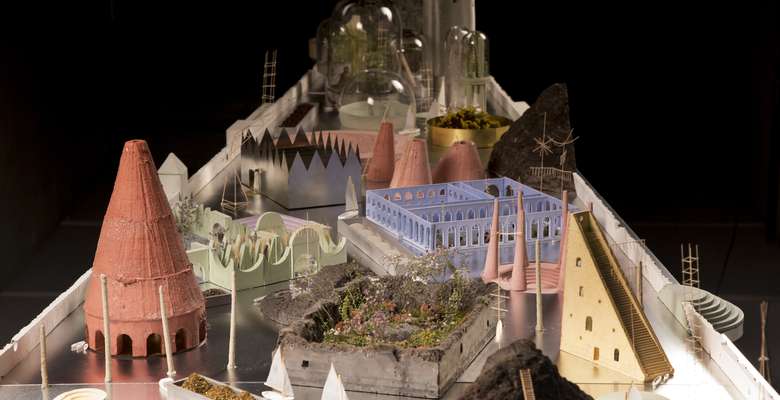
- Systemic changes
As Amsterdam expands towards the north, following increasing economic and social pressures, Amsterdam Allegories proposes to reimagine the Sixhaven area as an experimental public domain, where to discover and design the identity of the future city. A water filled harbor is inhabited by twenty-one experimental island, which reflect poetically on the city’s identity, on its dreams and obsessions, its desires and idiosyncrasies. The islands are not defined by their program, but by the possibility they offer for human encounters with animals, plants and minerals, and by new opportunities of discovery, action, and adventure. The project is a manifesto to shape a new type of public realm, where leisure becomes, literally, re-creation: an arena for action, rather than passive consumption, a place where new civic rituals may emerge, along new ways of being a citizen, a place where people are no longer seen as users, but as sailors, farmers, collectors, cartographers and explorers.
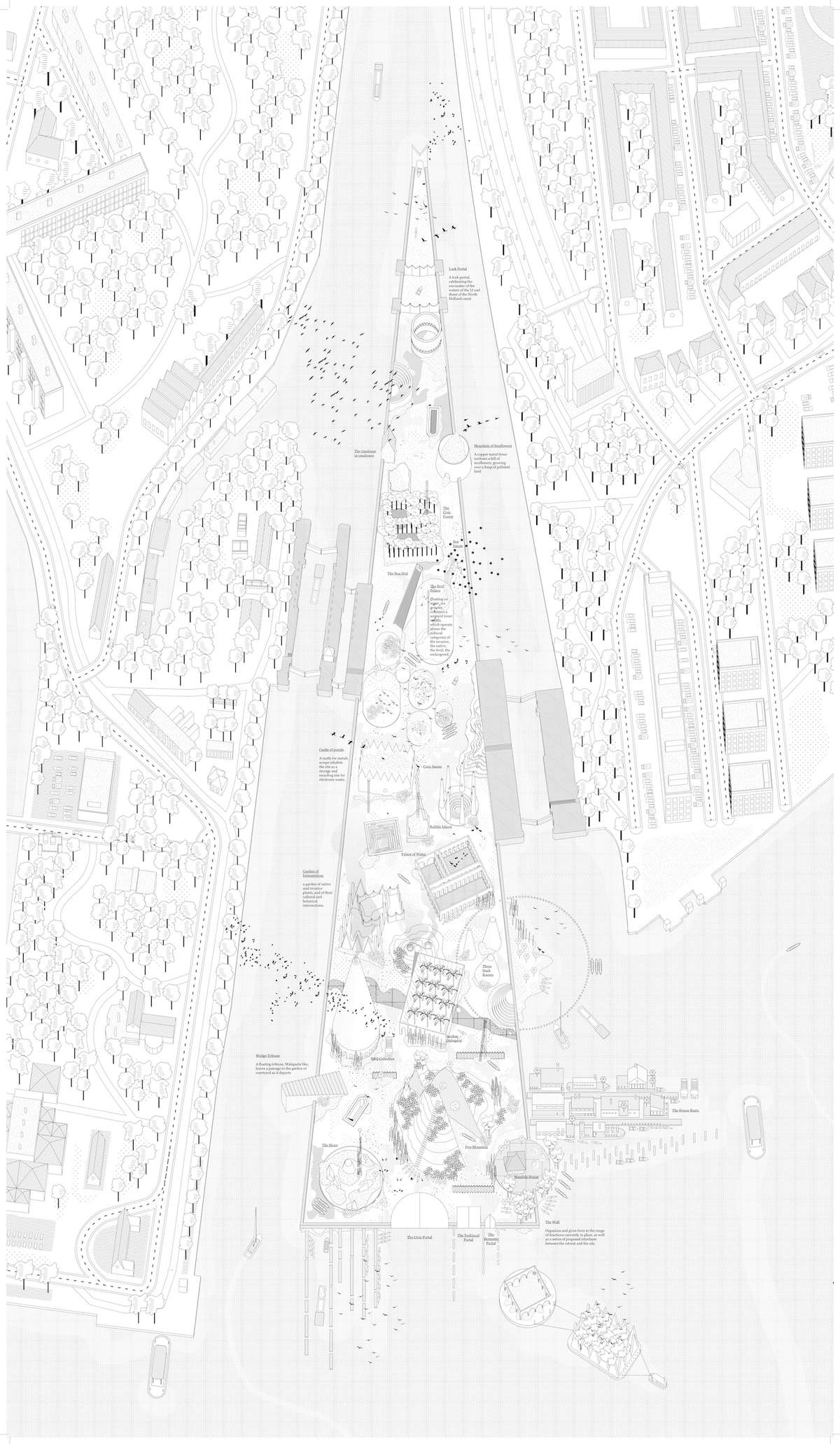
The harbour is to be entered only by boat. In navigation, experience overcomes speed, and as one moves on a surface rather than along a line, regulations become relative, their definition the result of an exchange rather than a dogma. The more manoeuvrable vessel will give the way to lesser, the more experienced sailor will make way for the beginner. Inexperience, in Sixhaven, is not detrimental, but a virtue by which one is able to see things for the first time.

Floating on water, six aviaries construct a series of inner worlds. A tropical cage hosts a nursery for the feral monk parakeets, parrots nesting freely in Amsterdam’s parks, which are for many a pleasing addition to the city’s wildlife, but for others a dangerous foreigner, harming native species. The domes of the Bird Palace echoes those of the lost Paleis voor VolksvlIJt, built in 1864 as Amsterdam’s version of the London’s Crystal Palace, a symbol of hope for a new golden age for the city.
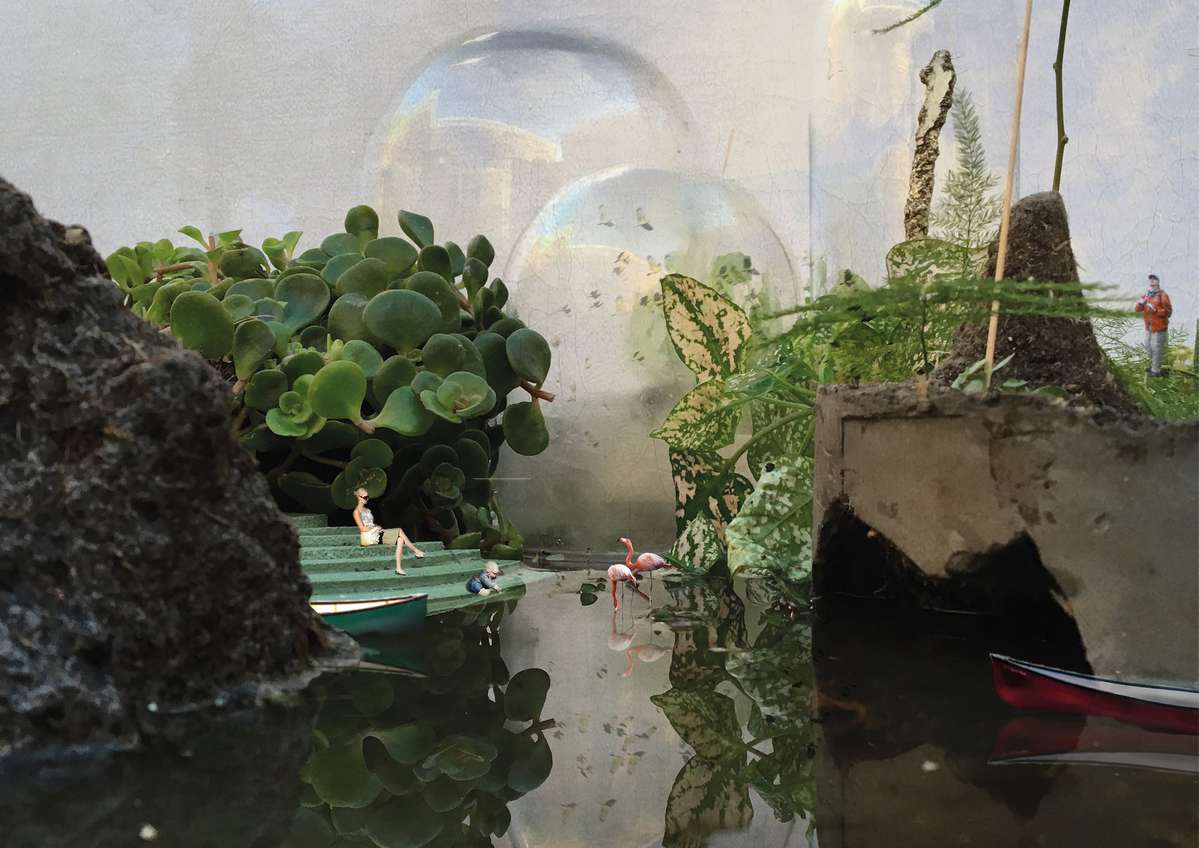
The islands are places where different social groups can cross paths, but it’s also a place where Amsterdam citizens meet other species, a place where to cultivate a more nuanced relation with “nature”, a place that offer possibilities of encounters between humans and other animals, plants and minerals.
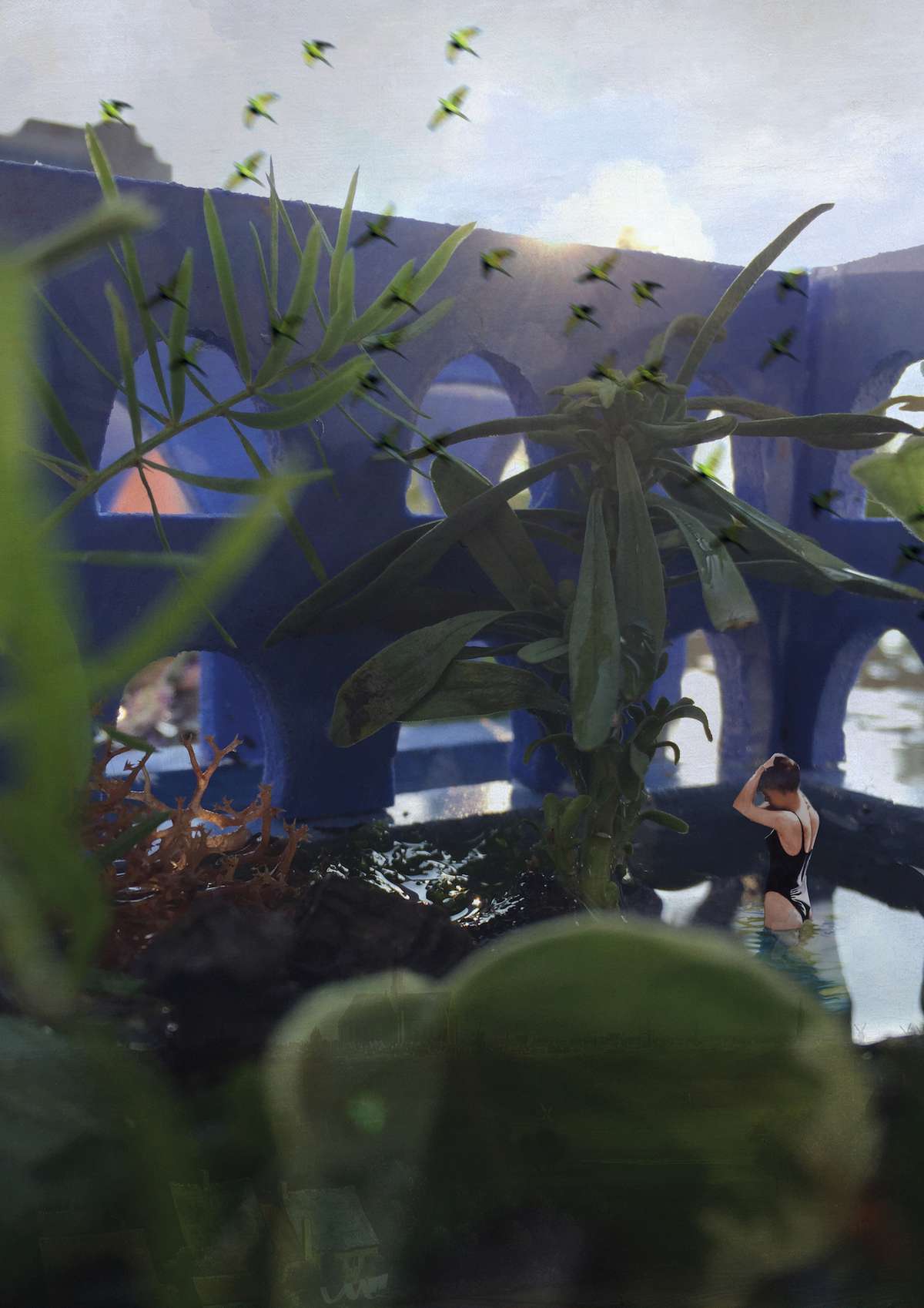
Dedicated to swimming in the IJ, the Palace of Water is a floating memory of the long gone Obelt Bathhouse, an open-air pool on the north shore of the IJ, loved my many. Between its arcades are ponds for different species: humans, wading birds, and fishes.

The islands are different worlds that offer different possibilities of uses and misuses. The ‘Shore Island’ is a tribute to the Dutch coast, a thought on the relation between the city and its territory; it reflects on coastal erosion, on sea level rise, but it also conveys a certain optimism - a vast sandpit, from which roofs emerge, that can be dug, designed, or hidden by use.
Amsterdam Allegories
Amsterdam Allegories

- Systemic changes
As Amsterdam expands towards the north, following increasing economic and social pressures, Amsterdam Allegories proposes to reimagine the Sixhaven area as an experimental public domain, where to discover and design the identity of the future city. A water filled harbor is inhabited by twenty-one experimental island, which reflect poetically on the city’s identity, on its dreams and obsessions, its desires and idiosyncrasies. The islands are not defined by their program, but by the possibility they offer for human encounters with animals, plants and minerals, and by new opportunities of discovery, action, and adventure. The project is a manifesto to shape a new type of public realm, where leisure becomes, literally, re-creation: an arena for action, rather than passive consumption, a place where new civic rituals may emerge, along new ways of being a citizen, a place where people are no longer seen as users, but as sailors, farmers, collectors, cartographers and explorers.

The harbour is to be entered only by boat. In navigation, experience overcomes speed, and as one moves on a surface rather than along a line, regulations become relative, their definition the result of an exchange rather than a dogma. The more manoeuvrable vessel will give the way to lesser, the more experienced sailor will make way for the beginner. Inexperience, in Sixhaven, is not detrimental, but a virtue by which one is able to see things for the first time.

Floating on water, six aviaries construct a series of inner worlds. A tropical cage hosts a nursery for the feral monk parakeets, parrots nesting freely in Amsterdam’s parks, which are for many a pleasing addition to the city’s wildlife, but for others a dangerous foreigner, harming native species. The domes of the Bird Palace echoes those of the lost Paleis voor VolksvlIJt, built in 1864 as Amsterdam’s version of the London’s Crystal Palace, a symbol of hope for a new golden age for the city.
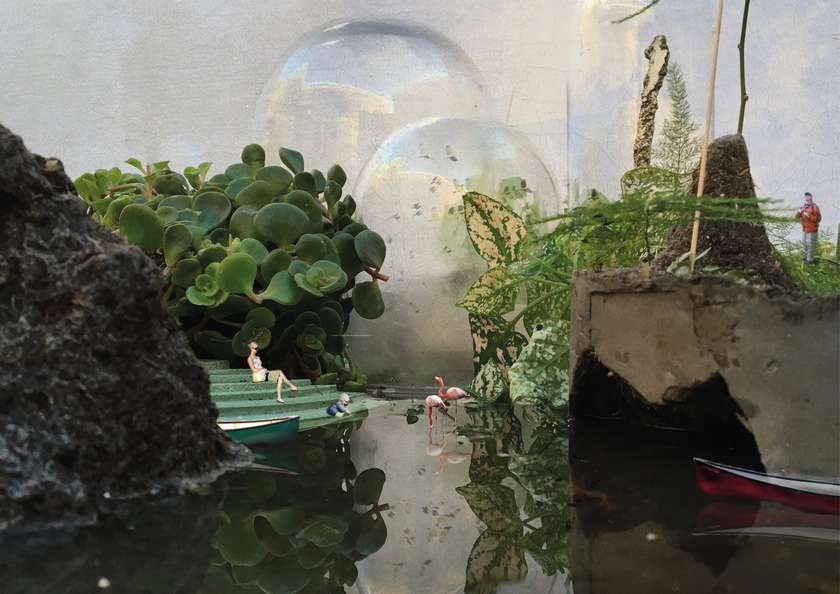
The islands are places where different social groups can cross paths, but it’s also a place where Amsterdam citizens meet other species, a place where to cultivate a more nuanced relation with “nature”, a place that offer possibilities of encounters between humans and other animals, plants and minerals.

Dedicated to swimming in the IJ, the Palace of Water is a floating memory of the long gone Obelt Bathhouse, an open-air pool on the north shore of the IJ, loved my many. Between its arcades are ponds for different species: humans, wading birds, and fishes.
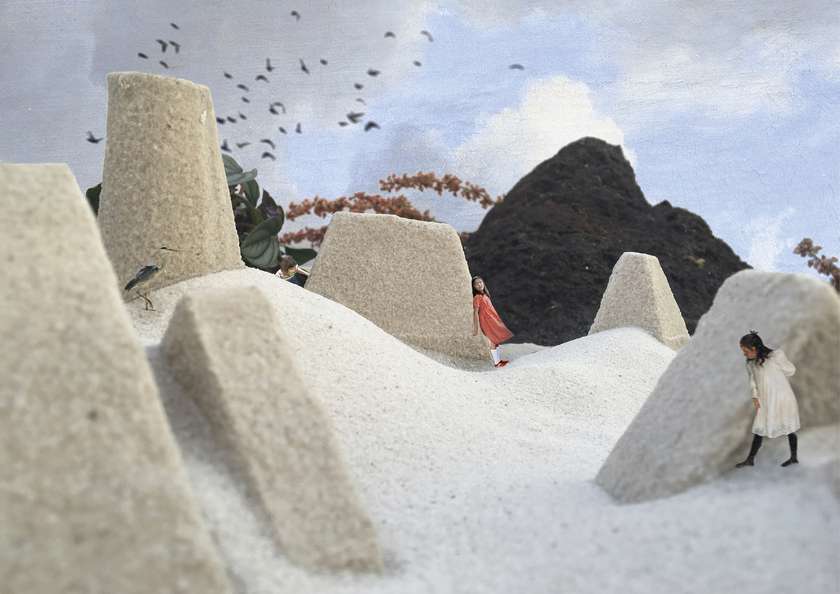
The islands are different worlds that offer different possibilities of uses and misuses. The ‘Shore Island’ is a tribute to the Dutch coast, a thought on the relation between the city and its territory; it reflects on coastal erosion, on sea level rise, but it also conveys a certain optimism - a vast sandpit, from which roofs emerge, that can be dug, designed, or hidden by use.